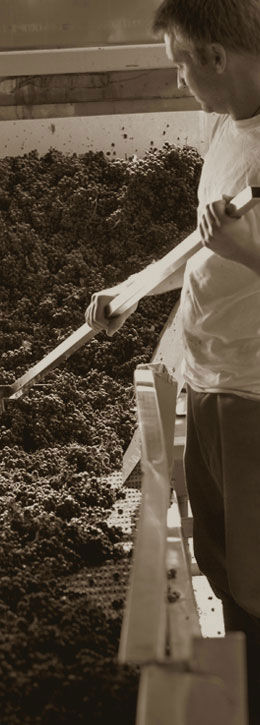
Technique
Micro-oxygenation
Micro-oxygenation, a process Horner uses to craft the higher volume Oregon tier, releases tiny amounts of oxygen into wine, mimicking slow-barrel maturation, but with much more precision and less cost. Horner was the first in Oregon to put micro-oxygenation into practice on Pinot. The technology, introduced in 1991, has only recently been perfected for use on such delicate varietals as Pinot Noir. For Horner, micro-oxygenation opens the door for stylistic exploration on a larger scale. Rather than using oak vessels to influence a vintage, he reverses the process, procuring French oak “dominos” toasted to his specifications, to add flavor and aromas to wines developing inside uniform, stainless steel tanks.

Cross Flow Filtration
Cross flow filtration is an essential new tradition adopted by Erath to keep wines bright, fruity and fresh. While the practice runs contrary to the Old-World belief that unfiltered, unfined is better, Horner says the new reality is that state-of-the-art cross flow filters are gentle on the wine. And, flavor trials show clear preference for filtered. Horner calls filtration “a hedge against problems in the bottle.” It prevents microbiology from continuing, removing particulates that detract from the wine, or even lead to its demise. Adverse microbiology is a top-of-mind issue in the winemaking industry worldwide. Having invested in the industry’s best cross flow filter, Erath is at the leading edge of high-value, high-quality Pinot production in Oregon.
Horner has carefully introduced a number of other improvements to Erath Winery, including a state-of-the-art sorting line and a new destemmer that separates whole berries from fractured ones. The “innovative traditionalist” will continue to pioneer new traditions that help reveal classic Oregon Pinot.
